Chinese Chestnut Tree
- June 16, 2023
- 0 comment
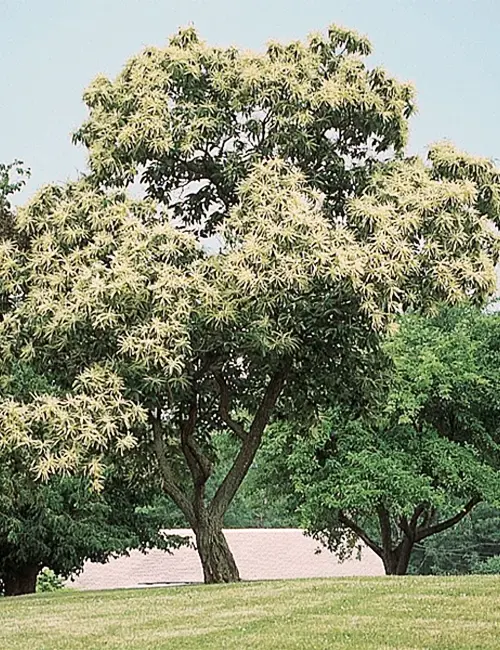
Common Name: Chinese Chestnut Tree
Botanical Name: Castanea mollissima
Family: Fagaceae
Plant Type: Deciduous tree
The Chinese Chestnut Tree (Castanea mollissima) is a captivating and highly valued tree that belongs to the Fagaceae family. With its robust nature and bountiful harvests, it has earned a place of distinction among tree enthusiasts and nut lovers alike.
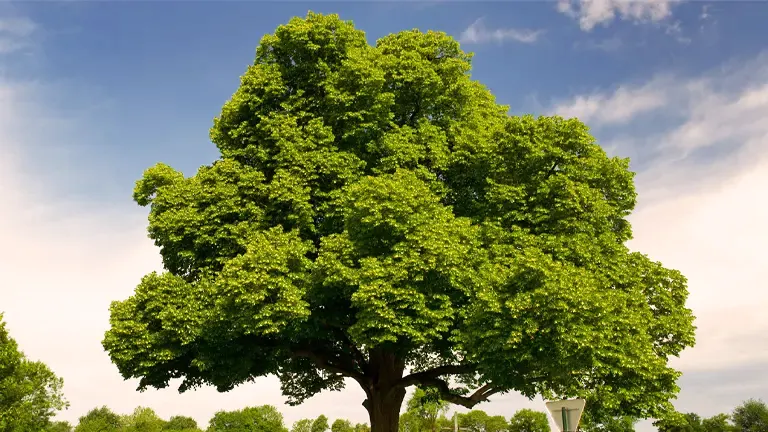
Mature Size and Growth Rate
Chinese Chestnut Trees can reach impressive heights of 40 to 60 feet (12 to 18 meters) with a spread of approximately 40 feet (12 meters). They are known for their relatively fast growth rate, adding around 12 to 18 inches (30 to 45 centimeters) per year.
Soil Type and Preference
These trees thrive in a wide range of soil types, including loamy, sandy, and clay soils. However, they prefer well-drained soil with a slightly acidic to neutral pH.
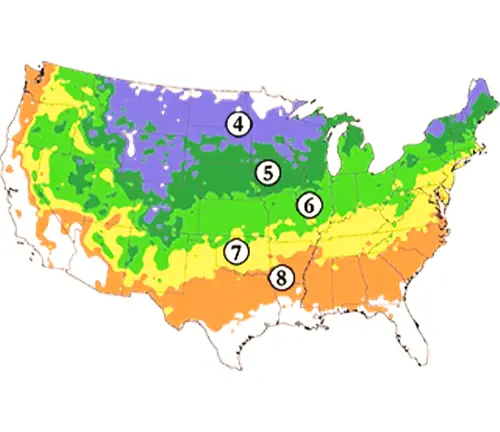
Hardiness Zones
Chinese Chestnut Trees are well-suited to thrive in USDA hardiness zones 4 to 8, making them adaptable to various climates and regions.
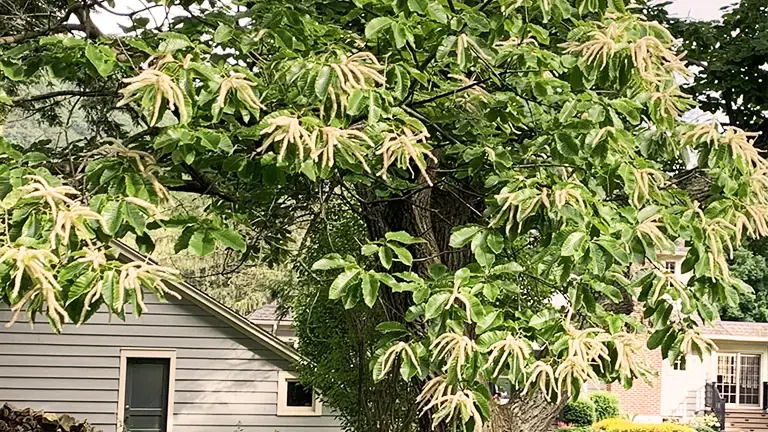
Sun Preference
Chinese Chestnut Trees are best suited for full sun exposure, meaning they require at least six hours of direct sunlight each day to promote healthy growth and bountiful nut production.

Attributes
Chinese Chestnut Trees boast several attractive features, including their majestic stature, broad canopy, and beautiful glossy green leaves. In the fall, the foliage transforms into stunning shades of gold and copper, adding a touch of autumnal beauty to any landscape.
Characteristics
Chinese Chestnut Trees feature a straight trunk, a broad and rounded crown, and distinctive, toothed leaves that provide a pleasing texture. The bark is gray and develops distinctive furrows as the tree matures.
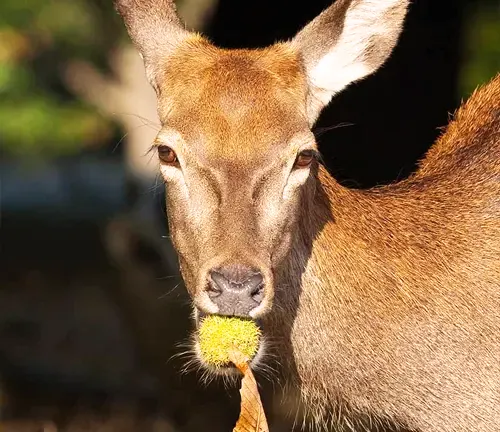
Wildlife Value
The nuts produced by Chinese Chestnut Trees serve as an important food source for various wildlife species. Squirrels, deer, turkeys, and a wide array of birds relish these nutritious nuts, contributing to the tree’s ecological significance.
Care
Chinese Chestnut Trees are relatively low-maintenance once established. Regular watering during dry periods, especially in the first few years, helps promote healthy growth. Mulching around the base of the tree aids in moisture retention and weed suppression. Pruning is generally necessary only to remove dead or damaged branches.
Benefits
The Chinese Chestnut Tree offers numerous benefits. Its shade-providing canopy and aesthetic appeal make it an excellent addition to any landscape. Furthermore, the nutritious nuts it bears are highly valued for their taste and health benefits, making them a popular choice for culinary purposes.
Invasive
Chinese Chestnut Trees are not considered invasive in most regions. However, it is always advisable to check with local authorities or gardening experts to ensure that planting this species aligns with the local ecosystem.
Lifespan
When properly cared for, Chinese Chestnut Trees can live for over 100 years, delighting generations with their natural splendor and delicious bounty.
Disadvantage
One potential disadvantage of Chinese Chestnut Trees is their tendency to produce spiky seed husks, which can be cumbersome to deal with when harvesting the nuts. However, many modern cultivars have been developed to minimize this issue.
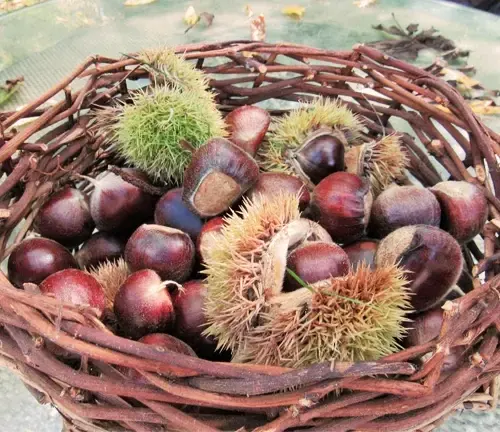
Edible or Not
Yes, the nuts produced by Chinese Chestnut Trees are indeed edible. They have a rich, sweet flavor and can be enjoyed roasted, boiled, or used as a versatile ingredient in various dishes.
Habitat Requirements
Chinese Chestnut Trees prefer well-drained soil and thrive in areas with ample sunlight. They are adaptable and can grow in a variety of habitats, including forests, open woodlands, and even urban landscapes.
Name Origin
The name “Chinese Chestnut” reflects the tree’s origin in China, where it has been cultivated for centuries. The species was introduced to the Western world in the late 19th century.
Varieties
Several cultivars of Chinese Chestnut Trees are available, each with its unique characteristics and nut qualities. Some popular varieties include ‘Kuling,’ ‘Nanking,’ and ‘Meiling.’
Pruning
Pruning Chinese Chestnut Trees is typically minimal. It mainly involves removing dead, damaged, or crossing branches. Pruning can be done during the dormant season to promote overall tree health and structure.
Propagating
Chinese Chestnut Trees can be propagated through various methods, including seed germination, grafting, or budding. Growing from seed is the most common approach, although it may take longer for the tree to bear nuts compared to grafted cultivars.
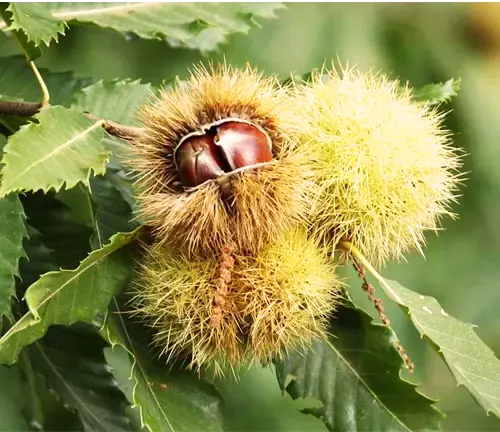
Common Pests & Diseases
While Chinese Chestnut Trees are generally resistant to many pests and diseases, they can be susceptible to chestnut blight, a fungal disease caused by Cryphonectria parasitica. Regular monitoring and early intervention are crucial to prevent and manage this disease.
Fun Facts:
- Chinese Chestnut Trees have been cultivated for thousands of years and have a rich cultural history in China.
- The nuts produced by Chinese Chestnut Trees are often roasted and enjoyed during the festive season, particularly around Christmas time.
- Chestnut wood is highly valued for its durability and is commonly used in furniture making.
Frequently Asked Questions:
- Q: Are Chinese Chestnuts similar to the European chestnuts?
A: While Chinese Chestnuts and European chestnuts share some similarities, they have distinct flavor profiles and physical characteristics. Chinese Chestnuts are typically sweeter and have a softer texture compared to their European counterparts. - Q: Can I grow a Chinese Chestnut Tree in a small garden?
A: Chinese Chestnut Trees require ample space to reach their full potential. If you have a small garden, consider selecting a dwarf cultivar or explore alternative nut-bearing trees suitable for limited spaces. - Q: Are Chinese Chestnut Trees drought-tolerant?
A: While Chinese Chestnut Trees can tolerate some drought once established, regular watering during dry spells is essential, particularly during the first few years after planting. - Q: How long does it take for a Chinese Chestnut Tree to produce nuts?
A: Chinese Chestnut Trees typically take around 3 to 5 years to bear their first significant crop of nuts, although some cultivars may start producing earlier.
In conclusion, the Chinese Chestnut Tree (Castanea mollissima) is a magnificent and versatile tree that combines ornamental beauty with delicious and nutritious nuts. Its adaptability, resilience, and significant wildlife value make it a valuable addition to gardens, landscapes, and ecosystems around the world. Whether enjoyed as a shade tree, a wildlife habitat, or a source of delectable nuts, the Chinese Chestnut Tree continues to captivate and nourish both humans and nature alike.




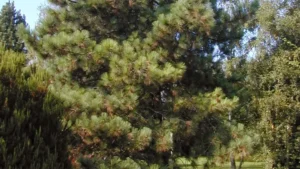
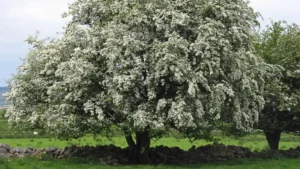

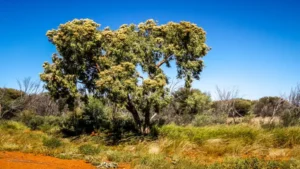

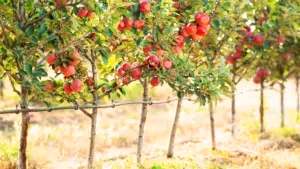
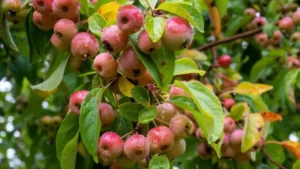

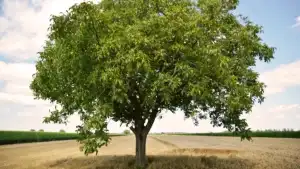
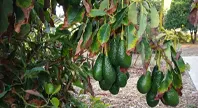
Leave your comment